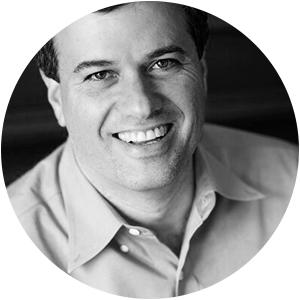Dear Sean,
I’ve run a successful firm for more than a decade, but more and more I feel like I have to justify why I am worth the fees I charge my clients, explaining the costs of my choices even though my clients have already approved their budgets. What starts out as a kind, respectful relationship all too often feels like it morphs into a power play where they question my every move. Is it just me, or is there something in the air where all civility is leaving this amazing industry? Or is it, dare I say, because I am a woman? Is there anything we designers can do to bring back the spirit of trust and connection we all need to do great work?
With(out) All Good Respect
Dear With(out) All Good Respect,
Ironically, in an age when we can communicate better than ever before in human history, too often we hide in a sea of sameness. We do not want to be seen as too different, too controversial or too radical, or to alienate those who might hire us as a result. We say it is all about the client’s wants and needs, and we use this excuse to be a chameleon—to never use the words “I” or “investment” when it comes to our work or ourselves. Many times, like in your case, the “we” is a woman.
In the face of those with more power (and clients most often do have more), conventional wisdom often dictates to be “flexible” and “respectful” of what they “need” us to do. In an analog world, we could absorb these indignities much more readily; in the end, a client did not have enough information to compare your work to that of others. But that world is all but gone. Instead, we are left with those who hold the power of the purse, believing that power is absolute.
Masculinity—in both a gender and abstract context—has traditionally been associated with qualities of strength, logic and the concrete. In contrast, femininity has been linked with emotional intelligence, intuition and imagination. On a metaphysical level, it’s theorized that when masculine and feminine aspects live in harmony and balance, their combined yin-and-yang strength helps to keep the world turning.
To put a complex concept very simply, when that balance is corrupted, things go awry. Undervaluing or dismissing either one of those natural energies, allowing one to overrun or dominate the other, typically causes problems in any human dynamic. Regardless of your gender or your profession, it’s likely you’ve experienced the fallout that can come from this kind of imbalance. Complicating all this is the modern design industry landscape: Those with businesses aiming to make the production of design smoother and faster are deeply invested in telling your clients that your process is irrelevant, and that the final product is all that matters. (There are billions of dollars at stake, and they’re willing to pay for the fight.)
However, there is a strategy, if not a solution: Be the artist that you are. Own your voice and your power—which, whether you are a man or woman, tends to be powerfully feminine in the world of design. You inhabit a different world, see it in a different light, and have the ability to transform the lives of your clients not just with the manifestation of your art, but through the process of its creation. If you own the power of imagination, you can do the work beyond the objects and find the meaning of the environments your clients seek from you. Practically, start with “I,” own your integrity, and know you and your work may not be the right fit for everyone, but rather, for those who appreciate and understand it.
It may be too difficult and vulnerable to live in the undefinable sea of creation (most often the realm of the feminine) today, but we have to try. We must honor the feminine that lives in all artists, and work diligently to educate those who seek to marginalize it—other designers included. You may make a nice return on some projects, but all of your profit (financial, psychological, even spiritual) lives in your power to create. In the face of power, be more vulnerable, not less.
____________
 Sean Low is the go-to business coach for interior designers. His clients have included Nate Berkus, Sawyer Berson, Vicente Wolf, Barry Dixon, Kevin Isbell and McGrath II. Low earned his law degree from the University of Pennsylvania, and as founder-president of The Business of Being Creative, he has long consulted for design businesses. In his Business Advice column for BOH, he answers designers’ most pressing questions. Have a dilemma? Send us an email—and don’t worry, we can keep your details anonymous.
Sean Low is the go-to business coach for interior designers. His clients have included Nate Berkus, Sawyer Berson, Vicente Wolf, Barry Dixon, Kevin Isbell and McGrath II. Low earned his law degree from the University of Pennsylvania, and as founder-president of The Business of Being Creative, he has long consulted for design businesses. In his Business Advice column for BOH, he answers designers’ most pressing questions. Have a dilemma? Send us an email—and don’t worry, we can keep your details anonymous.
Homepage photo: Shutterstock.com





























